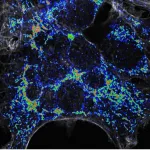(Press-News.org) An international team led by researchers at Baylor College of Medicine with the National Institutes of Health Extracellular RNA Communication Consortium and the Bogdan Mateescu laboratory at the ETH Zürich and University of Zürich has developed a new powerful resource to study extracellular RNA (exRNA), a novel form of cell-to-cell communication. The study, published in the journal Cell Genomics, lays the foundation to examine how exRNA and its carrier proteins found in bodily fluids function in a healthy as well as a diseased setting, potentially providing a means to accurately implement early detection and monitor disease processes.
“Ribonucleic acid or RNA is one type of genetic material that is present inside all living cells. It is mostly known to act as a messenger carrying instructions encoded in the DNA for the synthesis of proteins,” said co-corresponding author, Dr. Aleksandar Milosavljevic, professor and Henry and Emma Meyer Chair in Molecular Genetics at Baylor. He also is the director of the Graduate Program in Quantitative & Computational Biosciences and a member of the Dan L Duncan Comprehensive Cancer Center at Baylor. The Milosavljevic Lab is the host of the exRNA Atlas, the data management and resource repository of the Extracellular RNA Communication Consortium, an NIH Common Fund project exploring the biology of exRNA.
In recent years research has shown that RNA not only exists inside cells, but also is exported from cells as extracellular RNA and plays a role in cell-to-cell communication.
“ExRNAs exist in bodily fluids outside of cells where they can associate with a variety of carriers including RNA binding proteins (RBPs), but the cargo and distribution of RBPs across biofluids is largely unknown,” said coauthor Robert Fullem, a graduate student in the Milosavljevic lab. “Our goal in this study was to fill that gap. This major gap in knowledge limited our understanding of the role of RBPs as carriers of exRNA in human bodily fluids. Our findings open a new road toward understanding exRNA biology and provide new opportunities for the development of exRBP/exRNA liquid biopsy biomarkers.”
The researchers applied computational analyses to identify exRBPs in plasma, serum, saliva, urine and cerebrospinal fluid. The computational predictions were validated experimentally at about 80% in both plasma and cell cultures in the lab, suggesting high specificity for the computational method.
“With this information, we developed a map of candidate exRBPs and their exRNA cargo in bodily fluids expanding the landscape of potential biomarkers that can now be studied in liquid biopsies and used to track normal and disease processes,” Milosavljevic said. “We present this map as a resource available at no cost to the scientific community.”
Other contributors to this work include co-first authors Emily L. LaPlante and Alessandra Stürchler, David Chen, Anne C. Starner, Emmanuel Esquivel, Eric Alsop, Andrew R. Jackson, Ionita Ghiran, Getulio Pereira, Joel Rozowsky, Justin Chang, Mark Gerstein, Roger P. Alexander, Matthew E. Roth, Jeffrey Franklin, Robert Coffey, Robert L. Raffai, Isabelle M. Mansuy, Stavros Stavrakis, Andrew deMello, Louise C. Laurent, Yi-Ting Wang, Chia-Feng Tsai, Tao Liu, Jennifer Jones, Kendall Van Keuren-Jensen and Eric Van Nostrand. See the publication for a complete list of the institutions involved in this work.
This publication was supported in part by the NIH Common Fund (1UG3TR002881-01, 1U54DA036134-01,1U54DA049098-01, 1U54DA049098-01S1, 1UH3TR002881, OT2OD030547-01S1 and 5UG3TR002881-02). Further support was provided by CPRIT Scholar in Cancer Research grants RR200040, 4UH3CA241703-03, and a Swiss National Center of Competence (NCCR) in Research RNA & Disease grant.
END
Researchers reveal a map to study novel form of cell-to-cell communication
2023-04-20
ELSE PRESS RELEASES FROM THIS DATE:
ORNL’s Lupini elected fellow of the Microscopy Society of America
2023-04-20
Andrew Lupini, a scientist and inventor at the Department of Energy’s Oak Ridge National Laboratory, has been elected Fellow of the Microscopy Society of America.
MSA fellows are senior distinguished members who have made significant contributions to the advancement of microscopy and microanalysis through scientific achievement and service to the scientific community and the society. Lupini was one of only four scientists named an MSA Fellow this year.
Lupini was cited “for foundational contribution of theory and practice ...
Purdue Ventures invests in antibody-based cancer therapeutics company
2023-04-20
WEST LAFAYETTE, Ind. – Purdue Ventures, which manages three funds to support Purdue University-connected startups, has invested $250,000 in TRIO Pharmaceuticals Inc., a cancer immunotherapeutics startup founded by a Purdue University biophysics and structural biology alumnus. The company’s antibody-based therapeutics strengthens the body’s defense, the immune system, to eradicate cancer.
Purdue Ventures’ investment is part of a larger $2.2 million series seed-funding ...
Jefferson Lab stays gold by staying green
2023-04-20
NEWPORT NEWS, VA – Finding ways to purchase sustainable products for the work of science has yielded another golden award. The U.S. Department of Energy's Thomas Jefferson National Accelerator Facility has been recognized with a gold-level GreenBuy Award for its purchase of environmentally friendly products in fiscal year 2022.
The GreenBuy Award Program honors DOE sites that go beyond the minimum requirements for purchasing products that are energy efficient, water efficient and recycled. Participating sites can qualify for three levels of the award: gold, silver and bronze.
“The award is to show our mindset is ...
Evolution of two contagious cancers affecting Tasmanian devils underlines unpredictability of disease threat
2023-04-20
PRESS RELEASE FROM THE UNIVERSITY OF CAMBRIDGE
EMBARGOED UNTIL 19:00 BST LONDON TIME/14:00 US EASTERN TIME THURSDAY, 20 APRIL 2023
Paper and photos available at: https://drive.google.com/drive/folders/1YaEEaTCCMRt85NXmCSpeO15YOrIRaXpO?usp=share_link
Transmissible cancers, which occur only rarely in the animal kingdom, are spread by the transfer of living cancer cells. In the case of Tasmanian devils, the cells are transferred through biting – a behaviour that is common in devils especially in fights over mates and food.
Tasmanian devils are susceptible to two fatal transmissible cancers called devil facial ...
A gene involved in Down syndrome puts the brakes on neurons' activity in mice, new study shows
2023-04-20
Researchers from the University of Michigan have found that an extra copy of a gene in Down syndrome patients causes improper development of neurons in mice.
The gene in question, called Down syndrome cell adhesion molecule, or DSCAM, is also implicated in other human neurological conditions, including autism spectrum disorders, bipolar disorder and intractable epilepsy.
The cause of Down syndrome is known to be an extra copy of chromosome 21, or trisomy 21. But because this ...
Cracking the case of mitochondrial repair and replacement in metabolic stress
2023-04-20
LA JOLLA (April 20, 2023)—Scientists often act as detectives, piecing together clues that alone may seem meaningless but together crack the case. Professor Reuben Shaw has spent nearly two decades piecing together such clues to understand the cellular response to metabolic stress, which occurs when cellular energy levels dip. Whether energy levels fall because the cell’s powerhouses (mitochondria) are failing or due to a lack of necessary energy-making supplies, the response is the same: get rid of the damaged mitochondria and create new ones.
Now, in a study published in Science on April 20, 2023, Shaw and team cracked ...
The climate crisis and biodiversity crisis can’t be approached as two separate things
2023-04-20
Human beings have massively changed the Earth system. Greenhouse-gas emissions produced by human activities have caused the global mean temperature to rise by more than 1.1 degrees Celsius compared to the preindustrial era. And every year, there are additional emissions of carbon dioxide, methane and other greenhouse gases, currently amounting to more than 55 gigatonnes of carbon dioxide equivalent. This unprecedented climate crisis has consequences for the entire planet – the distribution of precipitation ...
Economic growth alone is not enough to eliminate rabies
2023-04-20
Economic growth alone may not be enough to deliver the internationally agreed target to end human deaths from dog mediated rabies, according to new research from the University of Surrey. The study identifies that targeting vulnerable populations and improving responsible pet ownership are urgently needed to eradicate the deadly disease, which has strong associations with poverty.
In a landmark study, Surrey researchers investigated whether incidences of rabies are an inevitable consequence of poverty or whether other measures of development, such as healthcare access, can play a role in tackling this preventable disease.
Dr ...
PLOS Genetics to launch Microbial Section
2023-04-20
SAN FRANCISCO — PLOS today announced that PLOS Genetics is expanding the scope of its journal with a renamed section called Microbial Genetics. This section will replace the former Prokaryotic Genetics section to emphasize research on microbes more broadly with the aim to publish studies that use genetic approaches to provide insights into how bacteria as well as archaea and their phages/viruses, fungi (including yeasts and filamentous fungi), and protists function and interact with the biotic and abiotic world.
PLOS Genetics has an established presence in the fungal genetics community, but this ...
Moffitt researchers discover pathway critical for lymphoma development
2023-04-20
TAMPA, Fla. — MYC proteins are important regulators of cancer cell growth, proliferation and metabolism through their ability to increase the expression of proteins involved in these processes. Deregulation of MYC proteins occurs in more than half of all cancers and is associated with poor patient prognosis and outcomes. Numerous researchers have devoted significant efforts to try to target MYC proteins as a therapeutic approach to treat cancer. However, this has been extremely challenging to date, and other complementary strategies are being investigated.
In a new article in Blood Cancer Discovery, which was published simultaneously with a presentation ...



